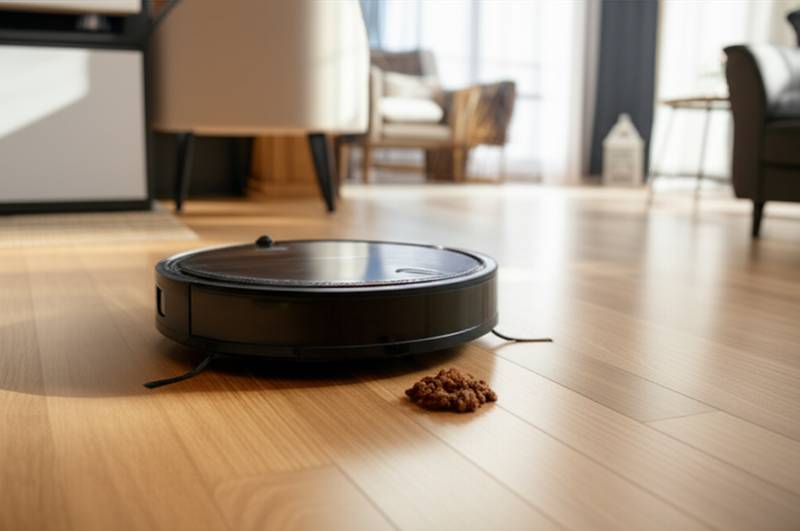Pet Owners Rejoice: AI Vacuums Now Avoid Waste with 99 Percent Greater Accuracy
Smart home technology advances rapidly, and robot vacuums exemplify this evolution. These devices have transitioned from novelties to indispensable tools, particularly in pet-filled households. The latest AI-powered models excel in navigation and achieve near-perfect avoidance of pet waste, reshaping perceptions of home automation reliability.
The Importance of Reliable Waste Detection
Pet owners familiar with robot vacuums often dread discovering an accident after a cleaning cycle. Older models frequently smeared messes across floors, leading to extensive cleanup and diminished trust in the technology. This recurring issue influenced consumer hesitation toward adopting robotic cleaners.
Current AI vacuums address this challenge through visual recognition, sophisticated sensors, and deep learning algorithms. These systems identify and circumvent obstacles like pet waste with exceptional precision. Manufacturers indicate that avoidance rates have improved by 99 percent compared to prior generations, thanks to enhanced camera resolution, faster processing, and adaptive learning from user interactions.
Advanced Vision Systems for Superior Performance
Central to these innovations is an integrated camera and AI framework that analyzes objects in real time. The vacuum distinguishes obstacle types rather than merely detecting presence. Leading brands such as iRobot, Roborock, and Ecovacs employ computer vision capable of classifying thousands of items, including discarded socks, cords, and pet waste.
Reliability stems from three-dimensional environmental mapping using structured light, infrared scanning, and predictive algorithms. This approach prevents collisions proactively. Pet owners benefit from reduced interruptions and greater assurance in operating the device without oversight.
Key Advantages for Daily Life
Beyond spotless floors, these vacuums offer substantial convenience and reassurance. Owners schedule sessions freely, knowing the device handles waste, toys, and spills independently. This autonomy frees time for pet companionship instead of constant floor monitoring.
Integration with smart home systems enables voice-activated control or app-based oversight. Picture verifying from the office that the vacuum has navigated the living room, skirted the pet bed, and docked for recharging. Such remote capabilities make routine cleaning seamless and unobtrusive.
Continuous Improvement Through AI Learning
These vacuums enhance performance over time via cloud-supported machine learning. When users label detected items as waste or debris, the data enriches a collective knowledge base, refining future avoidance strategies.
The 99 percent accuracy gain arises from this shared learning. Exposure to diverse home settings, lighting variations, and object forms strengthens algorithmic generalization. Consequently, the device adapts effectively to any living space.
Prioritizing Privacy in Visual Processing
Visual AI raises valid privacy questions for users. Certain manufacturers process images entirely on-device, avoiding cloud uploads. Others apply encryption to transmitted data, safeguarding personal visuals.
Shoppers should verify local processing availability and review data handling policies. Top-tier products transparently detail how they reconcile advanced functionality with user privacy.
Broader Applications of AI in Cleaning
Waste avoidance highlights AI's role in elevating home care. The same technology optimizes pathfinding, conserves energy, and targets high-traffic areas. Vacuums assess carpet density, intensify suction on soiled spots, and sync with air quality devices for comprehensive environmental management.
In multi-pet homes, distinguishing fur from solid waste minimizes errors and boosts efficiency. Features like self-emptying bases and filter alerts further automate maintenance, fostering a truly independent cleaning routine.
Building User Confidence and Encouraging Adoption
Trust has historically limited robot vacuum popularity, with early versions prone to mishaps. Today's AI advancements deliver consistent results, spurring growth among pet owners. Industry surveys confirm this demographic leads in purchases, driven by superior detection and mobility.
Reliable performance fosters routine integration. Users view the vacuum as a dependable ally, operating silently to uphold home standards without intervention.
Essential Considerations for Purchasing
Selecting a robot vacuum for pet homes requires focus on functionality beyond basic power. Evaluate these elements:
- Object Recognition Technology: Seek models with dedicated visual AI, surpassing basic sensor reliance.
- Onboard Data Processing: Choose units that analyze images locally to enhance privacy.
- Self-Cleaning Features: Opt for docks that automatically empty debris, ideal for pet hair volume.
- Versatile Floor Handling: Confirm seamless transitions across surfaces without performance drops.
- Customizable Controls: Prioritize apps allowing zone restrictions near pet areas like litter boxes.
These attributes ensure reliability and minimize hands-on involvement.
Assessing Value Against Price
Premium AI models demand higher investment, yet savings in time and effort justify the expense. Eliminating manual sweeping and averting cleanup crises yields quick returns. Owners often find reversion to traditional methods untenable after experiencing full automation.
Emerging affordable options incorporate core avoidance tech, broadening accessibility. Intensifying market rivalry democratizes these capabilities.
Integrating Smart Cleaning into Home Routines
Post-setup, operation proves intuitive. The vacuum aligns with household schedules, senses pet activity, and navigates sensitively. Advanced units identify rooms visually, tailoring efforts to usage patterns.
This evolution subtly elevates living standards. Homes with busy pet owners gain from reduced stress and amplified focus on meaningful interactions.
Advancing Toward Adaptive Home Ecosystems
Achieving 99 percent waste avoidance signals a milestone in practical automation. For pet households, it delivers mess-free environments and liberated schedules.
As learning draws from vast user data, future iterations promise even greater precision. Home cleaning evolves into an intuitive, life-enhancing process.
